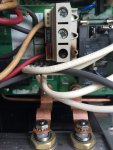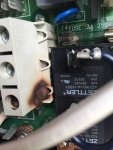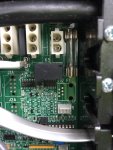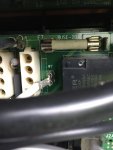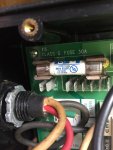My spa is an older Frankentub that has been refurbished bit by bit over the years. I've got a Balboa VS 501 spa pak in my hot tub - about 3 years old now, and installed by an electrician (well, an apprentice...). I've had NO electrical issues at all, until now. We shut down the spa over the summer and so today I wanted to start it up again. I had everything all prepped, but when I threw the breaker to power it up, I got nothing on the topside. I checked that the breaker hadn't been tripped - it hadn't. I got continuity on the power coming into the pak, so opened it up to check inside and see if any fuses had been blown - they looked okay to me (jpgs attached). However, there is obvious heat damage where the power has been connected to the board (jpgs attached). SO, what am I looking at, both in terms of a problem and a solution? I'm not an electrician, but I can connect and disconnect wires and follow instructions, so I'd like to do as much repair as I can.
Thanks in advance,
Thanks in advance,


